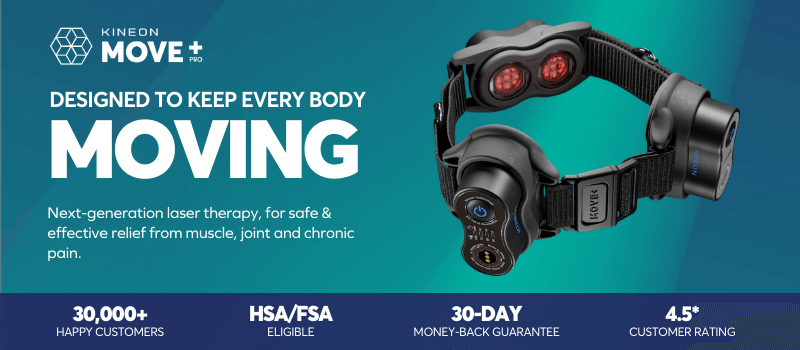From reconstructive surgeries (like a fusion of bone, joint implantation, tendon repair/transfer, etc) to bunions, toenails, and re-aligning the toe, having any kind of operation requires some downtime and rethinking of your typical daily routine.
For some, this could mean being out of work and movement for a few weeks, while others will deal with post-foot surgery recovery for several months. Although the surgery is a way to improve or fix whatever’s needed, the aftermath isn’t always a pleasant situation.
To speed up and provide as much comfort as possible to your journey, we’ve outlined some of the best ways to improve your post-foot surgery recovery.
What does the normal foot surgery recovery process look like?
The normal foot surgery recovery process involves rest and elevation of the foot/feet, allowing your body’s natural healing processes to take charge.
You may have been prescribed medication by your healthcare provider to assist with your journey back to health. The use of physical aids, such as crutches or a boot, are typically recommended too as these help redistribute your body weight and provide protection as you move around in the initial recovery stages.
As you regain strength, these aids can be removed altogether and you can move on to wearing footwear of your choice and returning to more intense physical activity.
Of course, each recovery path differs slightly from procedure to procedure.
How long does recovery take?
Recovery after foot surgery can be anything from a few weeks to a year. The two main factors that affect this are the extent of the surgery (i.e. how invasive/disruptive it is) and how much you do in the days/weeks following surgery to promote healing and not hinder that process.
It also depends on where you put the finish line of recovery. In truth, the ‘recovery period’ lasts until your body feels fully recovered (including from any associated pain/injury that caused it in the first place). However, it’s easy to assume that getting back on your feet means recovery is over; this is an easy mistake to make and could be costly in the long run. Make sure to listen to your body and consult professional medical advice.
Of course, the recovery journey for any surgery is never perfectly linear or predictable and any other health conditions you have may impact your recovery time.
Are there ways to speed up the recovery process?
Although there is no definitive ‘get better quick’ routine you can follow post-surgery, there are several small actions and adjustments you can make in the days, weeks, and months afterward that will support your body’s recovery processes and reduce the chances of infection or complication.
Listening to your body and the advice of your doctor is key. To supplement this, consider utilizing treatments like red light therapy as this accelerates the healing process, all while providing pain relief and reducing any pesky inflammation.
For people with diabetes, typical recovery may be slower as you’re at a higher risk of complications after surgery. This is due to a couple of reasons, including diabetes’ negative impact on blood circulation, increased chances of swelling and possibility of nerve damage, and slower identification of infection, etc. Therefore, diabetic foot care needs to be carefully monitored post-surgery to reduce the chances of further problems.
Ways to Improve Your Recovery
With the post-surgery outlook consisting of many weeks away from your usual life, speeding up the process is a desire of many.
Rest
It may sound obvious, but rest is the most fundamental and perhaps most crucial step in recovery.
You need both physical and mental rest during this period to help both the healing of any wounds and the managing of your body’s inherent surgically-induced stress response as well as any sleep lost in the lead-up to the procedure itself.
Surgery is a big step, so give yourself some grace and take care of yourself in the days and weeks after.
Elevation
A good action to include as part of your physical rest is to elevate the foot, even better if you can put a comfy cushion under it. This may add some extra support under your foot too.
The benefits of elevation are two-fold: it reduces blood pressure in the area to limit bleeding and encourages drainage in the area, supporting the body’s own healing processes.
Practice Mindfulness
Your mental rest is key too. Focusing on this, consider the practice of mindfulness - the ability to be fully present in a moment. This is most commonly done through meditation but could also be explored through activities such as:
- Introspection (exploring emotions)
- Lighting a candle and watching it burn
- Counting senses - 5 things you can see, 4 things you can hear, 3 things you can feel, 2 things you can smell, 1 thing you can taste
- Mindful arts and crafts, e.g. coloring or painting
Some scientists have gone as far as to (tentatively) claim that practicing mindfulness can help your body’s immune system, which by association, helps post-surgery healing. It’s not just a placebo effect!
Nutrition
It’s no secret that a healthy and balanced diet can do wonders for your health. This shouldn’t slip in the days of recovery either, with it being more important than ever.
Ensuring you get enough protein and vitamins will encourage healing in the bones, soft tissues, and skin.
Hydrate
Hydration is great for helping your body to heal. Drinking plenty of liquids helps to reduce
inflammation/swelling and increases blood flow (which brings nutrients in and flushes waste out).
Physiotherapy
Physical therapy is crucial to rehabilitate your muscles, joints, and body tissue affected by the injury and consequential surgery. It brings many benefits after surgery, from regaining strength and mobility to reducing pain and promoting healing.
You should consult a medical professional about physical therapy, so you do it at the right pace and intensity for your recovery progress. They’ll likely give you a recovery plan that is tailored to you.
Red Light Therapy
Gone are the days of the benefits of red light therapy just being known to doctors and medical professionals. Now, the word is spreading and incredible athletes like 8x CrossFit Games Athlete Brooke Wells use RLT on the regular for recovery and healing purposes.
It’s now even being used by celebs like Kim Kardashians who utilize red light for its valuable skincare and collagen-boosting benefits. But back to recovery…
Red light therapy works by stimulating blood flow and energy production (the mighty ATP) in the cells of the targeted area. It reduces pain and inflammation, whilst triggering the healing process to help damaged tissues repair themselves. This is incredibly advantageous for those in the post-foot surgery recovery process.
How can red light therapy help after foot surgery?
There are several ways to explore red light therapy in a safe way, from the more expensive clinic appointments to the more affordable and personalized at-home devices.
With just 15 minutes of red light therapy treatment a day, you can quickly notice a reduction in pain during recovery. The light energy works to stimulate our cell’s natural renewal, catalyzing the healing process your body naturally has to help you get back to fighting fit as soon as possible.
Don’t believe that red light therapy works? Check out some of the facts below…
Pain Relief
One of the most well-documented and widely recognized benefits of light therapy is its pain-relieving capabilities. It can reduce pain by promoting the body’s natural pain-killing endorphins, helping people find relief without the risk of medication.
Inflammation
When the foot joint is inflamed and swollen, likely due to surgery, mobility drastically decreases. Light therapy has anti-inflammatory effects due to the modulation of cellular processes and immune responses.
This is useful for post-foot surgery recovery, as RLT can reduce joint inflammation, pain, and stiffness. This can drastically improve quality of life.
Improved Tissue Healing
A 2010 study on wound recovery in rats found that low-level lasers had a positive and intensified effect on wound healing.
Other research has taken place, including this study looking at scar tissue from 2022. This case report showed how a 15cm linear scar from a cholecystectomy improved in both appearance and pain symptoms following therapy.
More research into accelerated wound and tissue healing can be found here.
For more articles on feet and ankle, read:














